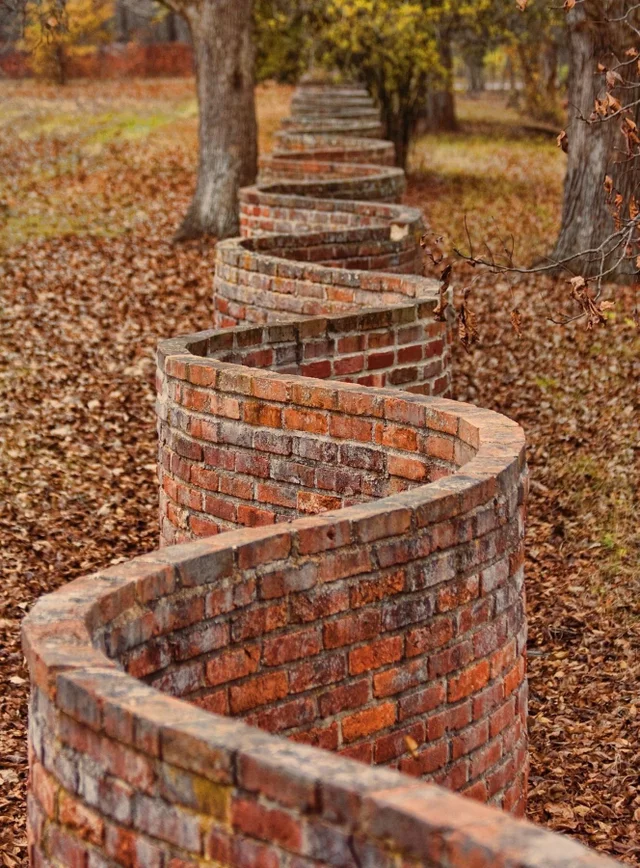Russian translator and history buff Olga Shirnina uses her historical knowledge to colorize old photos from the past.
Photos from the early days of photography such as a Russian family from the Ekatrinburg area of Siberia in the late 1800s to images from World War II and the 1960s.
Content
She colorized photos of ordinary people at school to the royal family of Tsar Nicholas II.
Other famous Russians she colorized included: author, Leo Tolstoy; playwright, Chekhov, actress, Vera Komissarzhevskaya; former Premier of the Soviet Union, Vladimer Lenin.
Romanov Family
Russian historian and former Foreign Minister, Pavel Nikolayevich Miliukov; and Grigori Rasputin, the spiritual and political advisor to the Russian royal Romanov family, according to mymodernmet.com and boredpanda.com.
Throughout the article are portraits of what was judged at the time the most beautiful women in Russia.
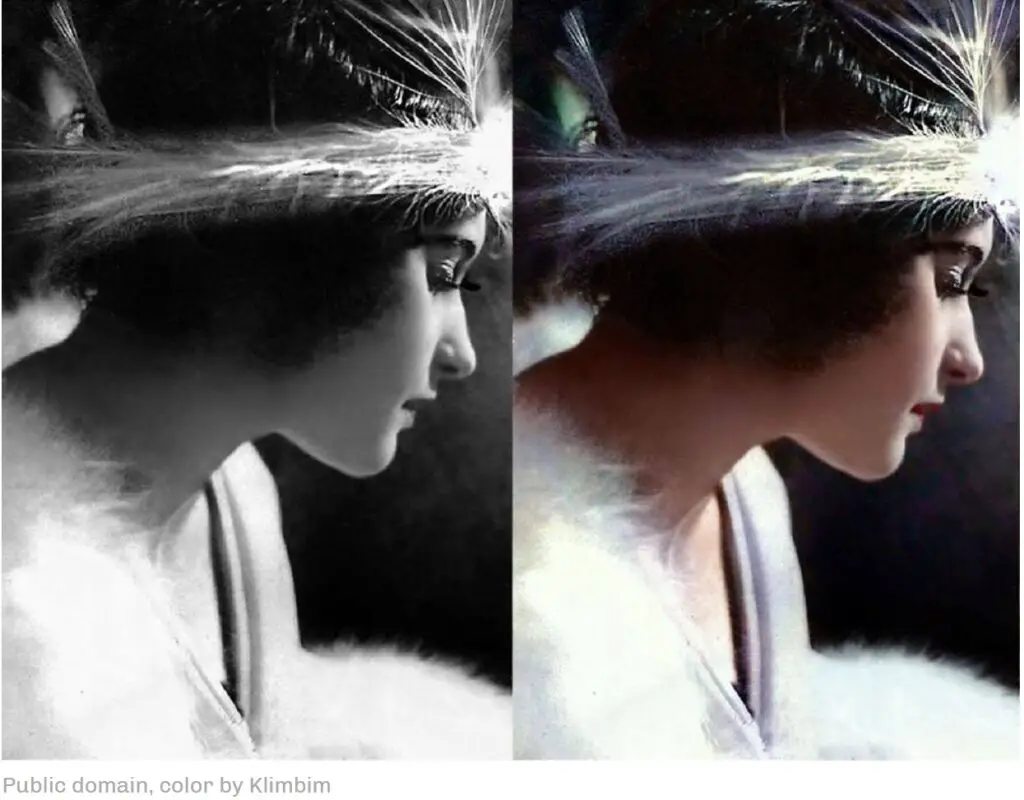
Ordinary People
Some of the shots of everyday people include one of a train window full of happy faces as the first riders on the Moscow Metro in 1935; a worker and a supervisor having a word together in a Moscow automobile factory in 1954; chess masters Jose Raul Capablanca and Alexander Alekhine after a match in 1913 and a glorious parade of Soviet Athletes in 1937. A cheesecake pictures of Russian wrestler, Karl Pospischil on a bearskin rug in 1912 has to be one of the most interesting.
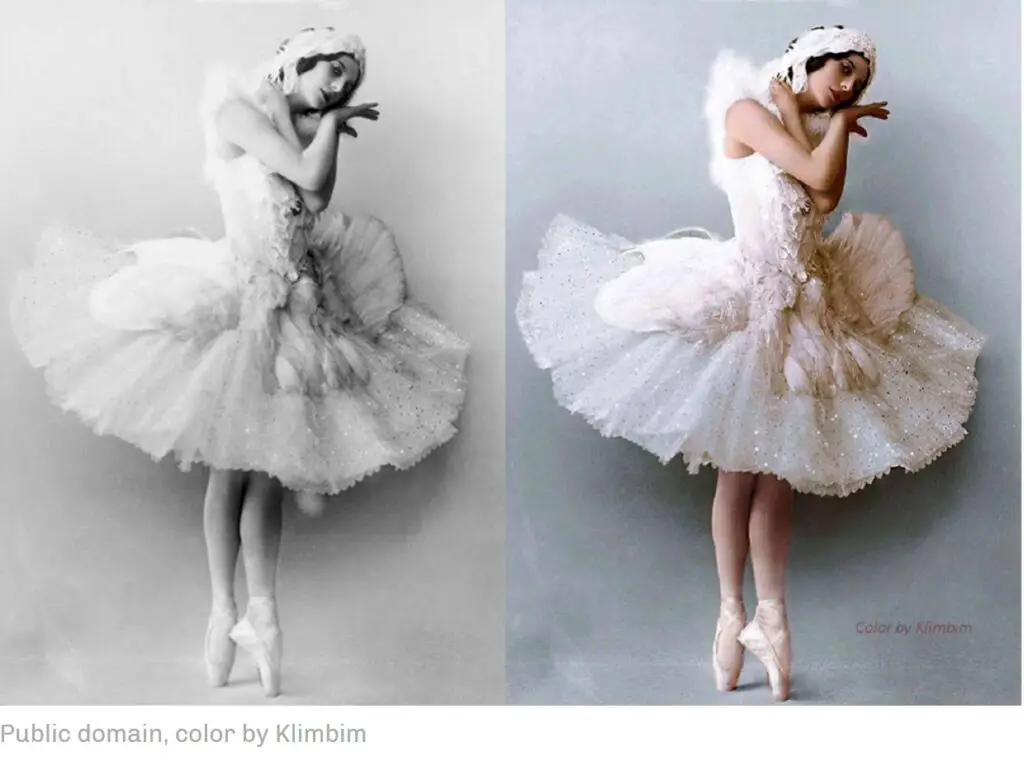
Adding color to the photographs doesn’t just make the picture more lifelike, Shirnina does it only after painstaking research to make sure of historical accuracy. According to mymodernmet.com, she researches military uniform colors, patch colors, medals, and much more.
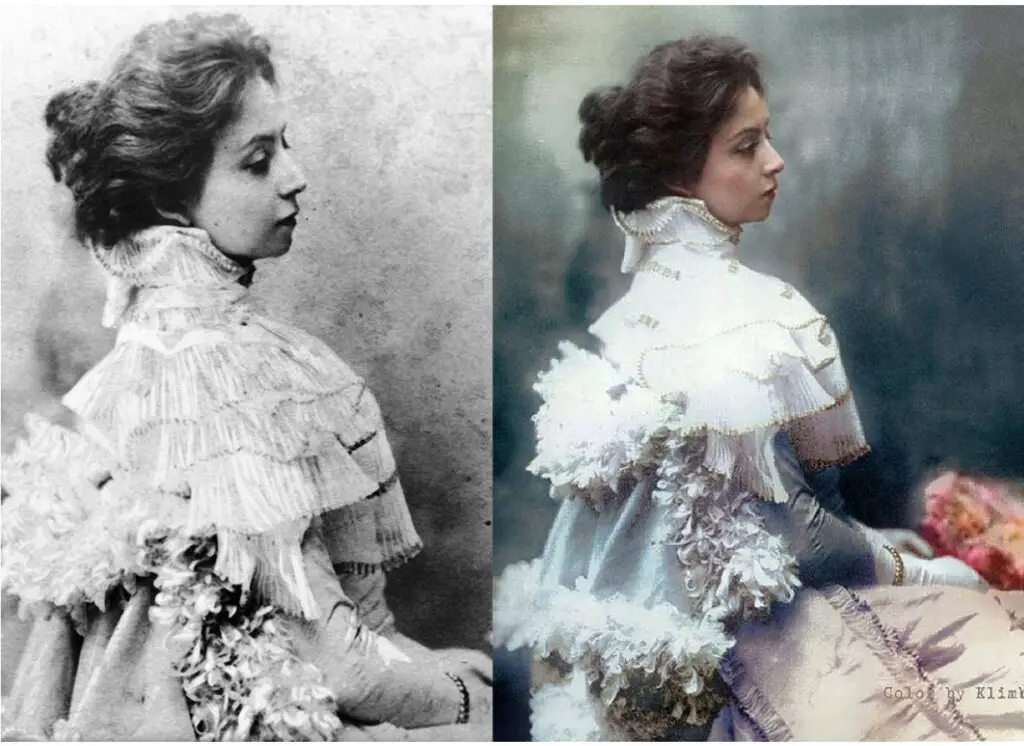
Red Army
Shimina did a series of portraits of female snipers in the Russian army including Lyudmila Pavlichenko, a sniper who joined the Red Army in the Twenty Fifth Rifle Division and killed three hundred and nine Nazi soldiers earning her the nickname “Lady Death”.
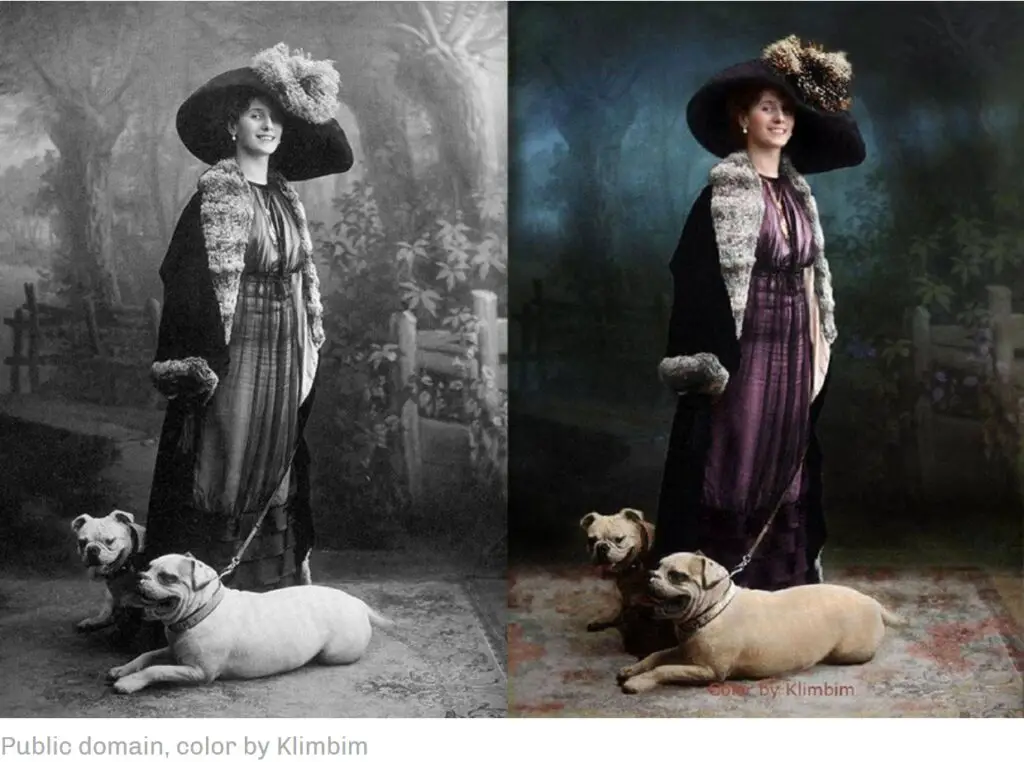
Roza Shanin, the sniper who had fifty nine confirmed kills was also colorized by Shirnina along with a group shot showing the ladies with their camouflage and guns. In all, there were about two thousand female snipers in World War II five hundred of whom survived the war.
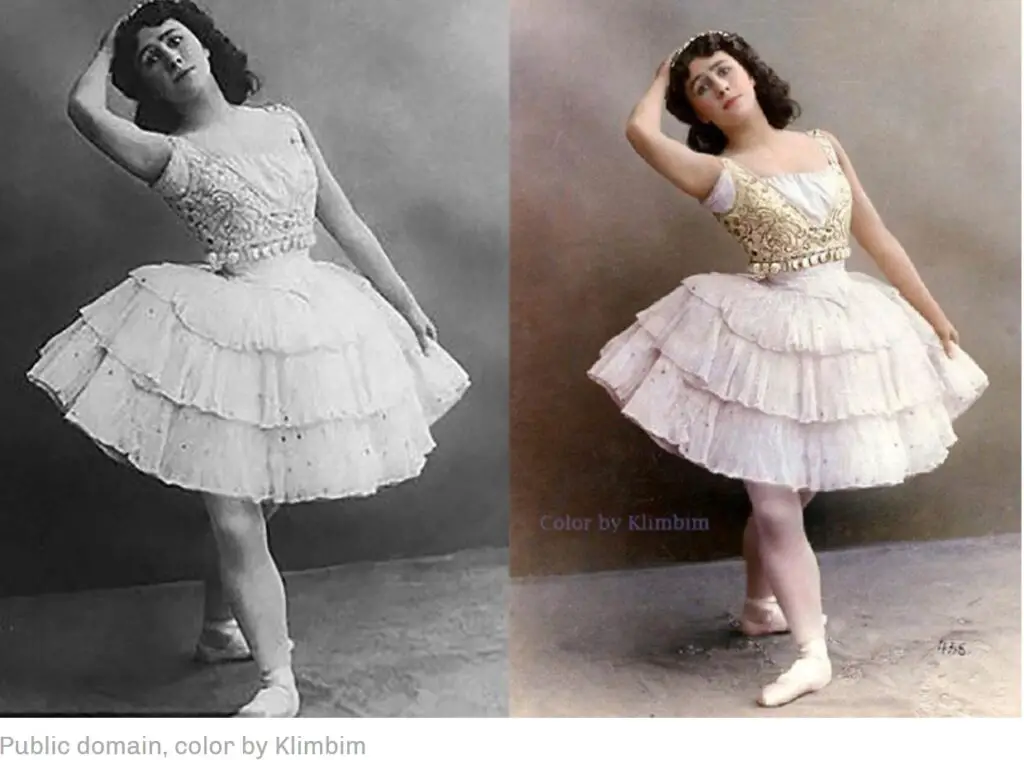
Tsarinas
In some cases when she can’t find anything comparable in the history books she will make an educated guess using colors and gemstones with styles that were popular at the time. The colorization of the intricate headdresses the former Tsarinas wore makes the gems pop out and one feels like they are looking back through time.

Olga Shirnina received her education at the Moscow State Pedagogic Institute of Foreign Languages, where she earned a Ph.D. in Germanisctic.
She became a professor of German at the Moscow State Pedagogic Institute of Foreign Languages and works to translate Russian books to German and German books to Russian. She has earned several prestigious commissions including the picture of Mata Hari on the cover of the book by Paulo Coelho.
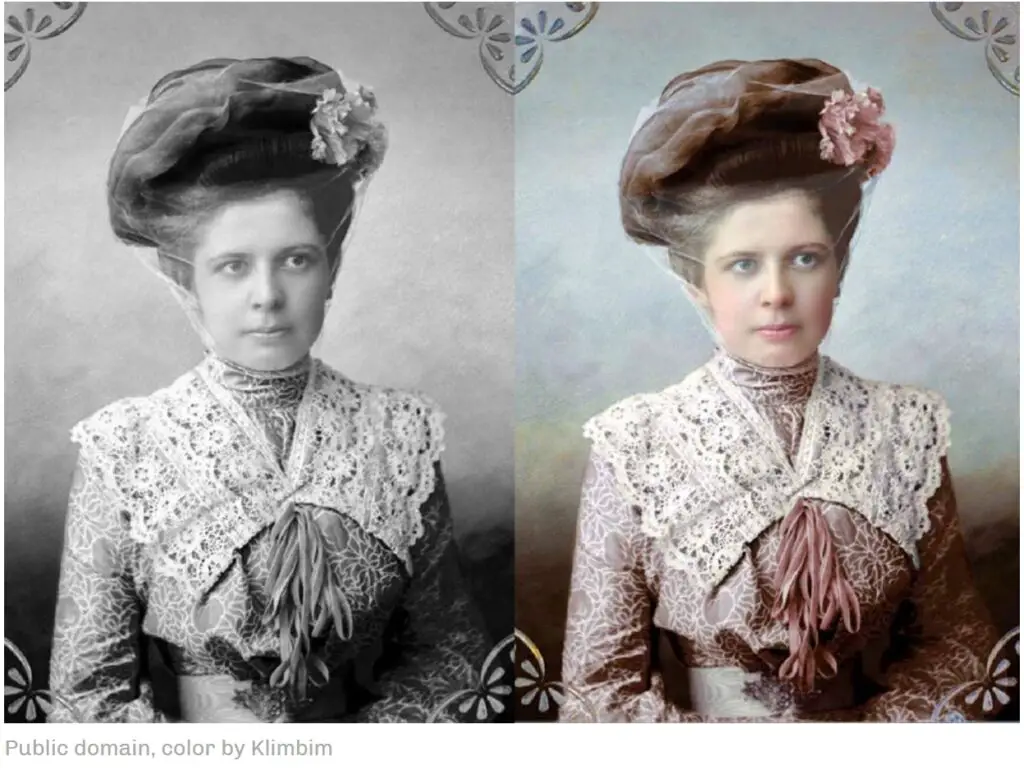
Tsar Alexei Mikhailovich
Shirnina also colorized pictures in her album “Gone Beauty in Coloured Photos by Olga Shirnina”. She tracked down pictures from the lavish costume ball thrown at the Winter Palace by the Romanov family in 1903.
Guests were required to dress as people from the time of Tsar Alexei Mikhailovich who reigned from 1645 until 1676 or come in Russian National dress.
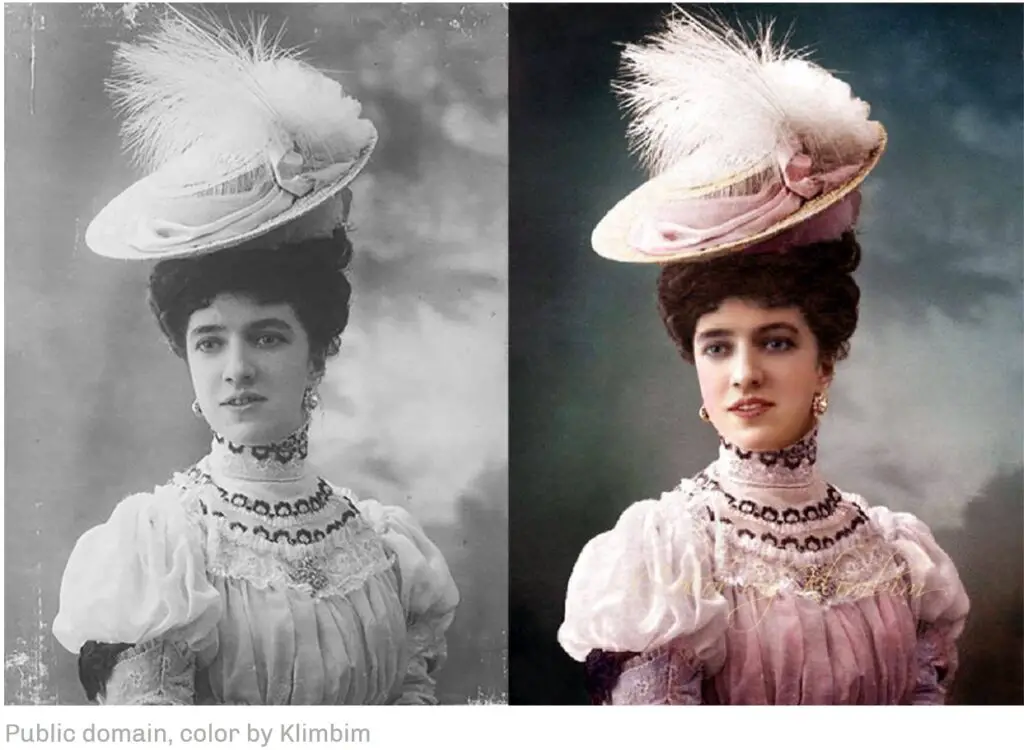
A few outfits that were saved and some of the dressmakers’ sketches gave Shirnina enough information to accurately color the detailed photographs of furs, brocades and lace with elaborate headpieces decorated with pearls and gemstones and sewn with golden thread.
Recently the social media site, Facebook, suspended Shirnina for three days for “breaching community standards”.
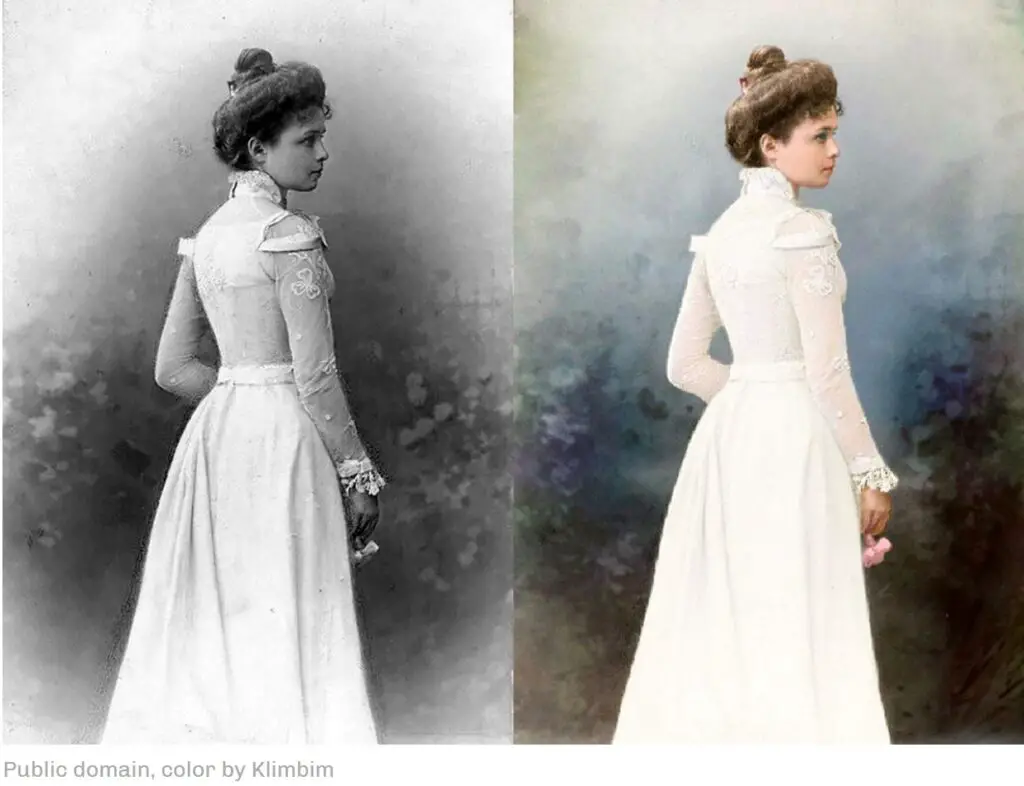
If you like this article, then please follow us on Facebook and Instagram
Another Article From Us: Romanov Mystery That Changed Russia Forever Solved by DNA
Checkout Klimbim’s amazing work on her site klimbim2014.wordpress.com
Her colorized photos of Russian troops flying a Soviet flag over the Reichstag in May of 1945 after the fall of the Nazi party, a portrait of Hitler and his close cabinet member, Hermann Goering. Shirnina has replied that because Facebook took it upon themselves to delete the photos they considered offensive they are trying to “delete history.

